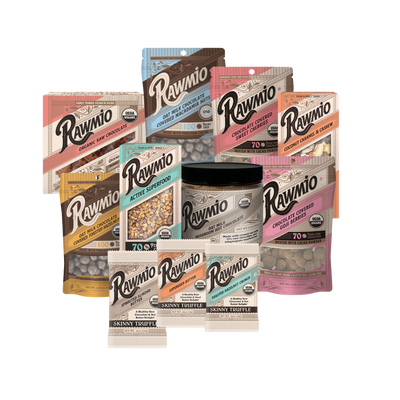Chocolate Hazelnut Spread and Superfood Spread are two distinct types of spreads!

-
Ingredients: Typically made from roasted hazelnuts, cocoa powder, sugar, and often contains additives like palm oil or milk solids for a creamier texture and sweetness.
-
Flavor and Texture: Offers a rich, chocolaty taste with the nutty essence of hazelnuts. It has a smooth, creamy consistency, similar to chocolate spread, and is widely used as a decadent topping or filling for various foods, such as bread, pancakes, crepes, or as a dip for fruits.
-
Nutritional Profile: While delicious, most commercial chocolate hazelnut spreads are high in sugar and may contain unhealthy fats or additives. Some variations might offer moderate amounts of protein and healthy fats from hazelnuts but are often considered more of a treat than a health food.
Superfood Spread:
-
Ingredients: A superfood spread typically consists of a blend of nutrient-dense ingredients such as seeds (chia, flaxseed, hemp), nuts (almonds, cashews), dried fruits (goji berries, cranberries), and sometimes added superfoods like spirulina, maca, or cacao nibs. It's often free from refined sugars and artificial additives.
-
Flavor and Texture: The taste can vary widely depending on the blend of ingredients, offering a nutty, earthy, or slightly sweet flavor. The texture might be slightly gritty due to the inclusion of seeds and nuts, providing a chunkier consistency compared to smoother spreads.
-
Nutritional Profile: Superfood spreads are known for their rich nutrient content, offering a variety of vitamins, minerals, antioxidants, healthy fats, fiber, and plant-based protein. They are often lower in sugar and can provide a more balanced nutritional profile compared to chocolate hazelnut spreads.
Key Differences:
-
Ingredients: Chocolate hazelnut spreads primarily focus on hazelnuts and chocolate, often accompanied by sugar and additives, while superfood spreads feature a diverse range of nutrient-packed ingredients.
-
Nutritional Value: Superfood spreads are typically considered a healthier option due to their nutrient density, lower sugar content, and absence of artificial additives compared to chocolate hazelnut spreads, which are often seen as more of a sweet treat.
-
Usage: Chocolate hazelnut spreads are commonly used as a dessert or sweet topping, whereas superfood spreads might be used in a more versatile manner, such as spreading on toast, adding to smoothie bowls, or incorporating into baking for a nutrient boost.
In summary, while both spreads offer distinct flavors and uses, superfood spreads tend to prioritize a broader range of nutrients and health benefits, while chocolate hazelnut spreads are usually chosen for their indulgent and sweet taste, making them more of an occasional treat.



Leave a comment